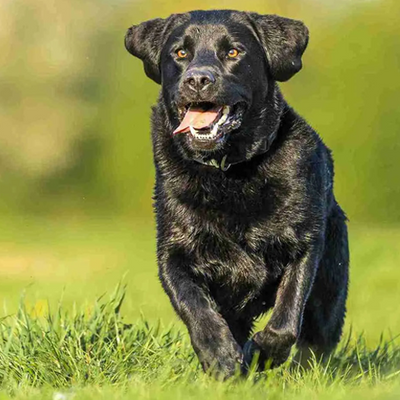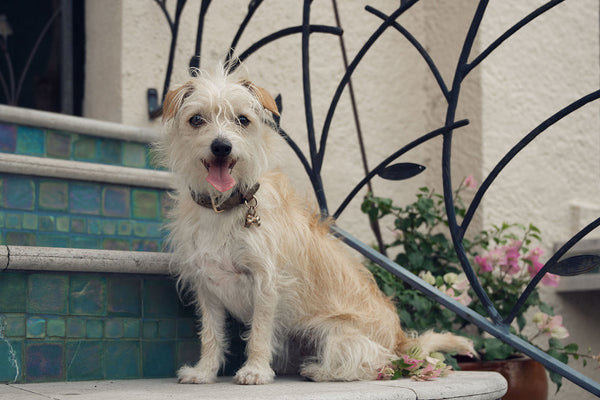Labradoodle
Labradoodle
America’s Friendly and Hypoallergenic Companion
1. Introduction to the Breed
The Labradoodle, a beloved cross between a Labrador Retriever and a Poodle, holds a top spot among America’s favorite mixed dog breeds in 2025, cherished for its friendly demeanor and low-shedding coat. Known for their intelligence, playful energy, and hypoallergenic qualities, Labradoodles are ideal for families, allergy sufferers, or active individuals seeking a loyal companion. Their curly or wavy fur and outgoing personality make them perfect for diverse households, from bustling city apartments to spacious suburban homes, bringing warmth and joy wherever they go.
2. History of the Breed
Originating in Australia in the 1980s, the Labradoodle was first bred by Wally Conron to create a guide dog with a hypoallergenic coat for a visually impaired client. Combining the Labrador Retriever’s gentle temperament with the Poodle’s low-shedding curls, the breed gained rapid popularity in the U.S. by the 1990s, becoming a staple in homes and as service dogs. While not recognized as a purebred by the American Kennel Club (AKC), Labradoodles are celebrated for their versatility, with American breeders refining the mix to enhance family-friendly traits and coat variety.
Fun Facts
- Service Star: Labradoodles were initially bred as guide dogs, blending the Labrador’s trainability with the Poodle’s hypoallergenic coat.
- Coat Variety: Their coats range from curly (Poodle-like) to wavy or fleece-like, offering options for different grooming preferences.
- Size Spectrum: Labradoodles come in standard (45–65 lbs), medium (30–45 lbs), and miniature (15–30 lbs) sizes, suiting various lifestyles.
- American Favorite: Their popularity surged in the U.S. due to their friendly nature, making them a top choice for families and therapy roles.
3. Physical Characteristics
- Typical Size and Weight: Labradoodles vary in size, with standards standing 21–24 inches tall and weighing 45–65 pounds, mediums at 18–21 inches and 30–45 pounds, and miniatures at 14–17 inches and 15–30 pounds.
- Coat and Color: Their coat is curly, wavy, or fleece-like, low-shedding, and comes in colors like cream, apricot, chocolate, black, or parti patterns, requiring regular grooming to maintain.
- Distinctive Features: Labradoodles have expressive, round eyes (often brown or hazel), floppy ears, and a sturdy yet elegant build, with a tail that wags enthusiastically, reflecting their cheerful nature.
4. Personality Traits
Labradoodles are affectionate, intelligent, and highly social, blending the Labrador’s warmth with the Poodle’s cleverness, making them excellent family pets or therapy dogs. They thrive on interaction, enjoying playtime with children, other pets, or even strangers, though their energy requires active engagement to prevent boredom. Their gentle, eager-to-please nature makes them highly trainable, but they may exhibit playful mischief if not mentally stimulated. Labradoodles suit owners who can provide attention and activity, offering boundless loyalty and cuddly companionship in return.
5. Care Requirements
- Exercise Needs: Labradoodles require 45–60 minutes of daily exercise, such as walks, fetch, or agility games, to channel their high energy and prevent destructive behaviors.
- Grooming Needs: Their low-shedding coat needs brushing 2–3 times weekly and professional grooming every 6–8 weeks to prevent matting, plus regular ear cleaning to avoid infections.
- Dietary Considerations: A high-protein diet supports their active lifestyle, with portion control to prevent obesity; American-made kibble with omega fatty acids, available at libertypaw.com, enhances coat health.
6. Health and Lifespan
Labradoodles have an average lifespan of 12–15 years, with potential health concerns including hip dysplasia, elbow dysplasia, and ear infections due to their floppy ears. Regular vet checkups, a balanced diet, and weight management reduce risks, while genetic testing from reputable breeders can screen for hereditary issues like progressive retinal atrophy (PRA). Owners should monitor for limping, ear discomfort, or allergies and use American-made grooming products from libertypaw.com to maintain skin and coat health, ensuring a vibrant, healthy life.
7. Training and Socialization
Labradoodles are highly intelligent and respond well to positive reinforcement training, mastering commands like “sit,” “stay,” or “fetch” with treats or play rewards. Early socialization with people, pets, and new environments fosters their friendly nature, reducing shyness or overexcitement. Consistent boundaries prevent jumping or chewing, common in energetic puppies, while puzzle toys from libertypaw.com keep their sharp minds engaged. Their eagerness to please makes training enjoyable, ensuring they adapt well to family routines or public settings.
8. Ideal Home Environment
Labradoodles thrive in active, engaging homes, from urban apartments with daily walks to suburban yards with space to play, as long as owners provide interaction. They suit families, singles, or seniors who can offer time for play and cuddles, with American-made toys and beds from libertypaw.com enhancing their comfort. Secure spaces with room for fetch or exploration satisfy their energy, while cozy indoor spots cater to their love for lounging with family, creating a balanced and happy environment.
9. What’s the Best Toy for My Labradoodle?
Labradoodles love toys that match their playful, intelligent nature, and libertypaw.com offers American-made options to keep them engaged. Durable rope toys for tug-of-war provide 20–30 minutes of physical exercise, strengthening their jaws and bonding with owners. Squeaky plush toys, ideal for 15–20 minute fetch sessions, satisfy their retrieving instincts, with supervision to prevent tearing. Puzzle treat dispensers engage their clever minds for 15–30 minutes, perfect for indoor stimulation. Avoid small toys to prevent choking, and rotate options to maintain excitement, ensuring hours of fun.
10. Adoption and Breeder Tips
Choose Labradoodle breeders affiliated with organizations like the Australian Labradoodle Association of America, ensuring health clearances for hips, elbows, eyes, and allergies. Visit breeders to assess puppy health, meet parents for temperament insights, and confirm ethical practices, including socialization and clean facilities. Rescues, such as Labradoodle-specific groups or local shelters, offer adoptable dogs with known histories, ideal for those seeking to adopt. Avoid unregulated breeders, and ask about genetic testing and activity needs to ensure a healthy, well-adjusted Labradoodle for your home.






0 comments